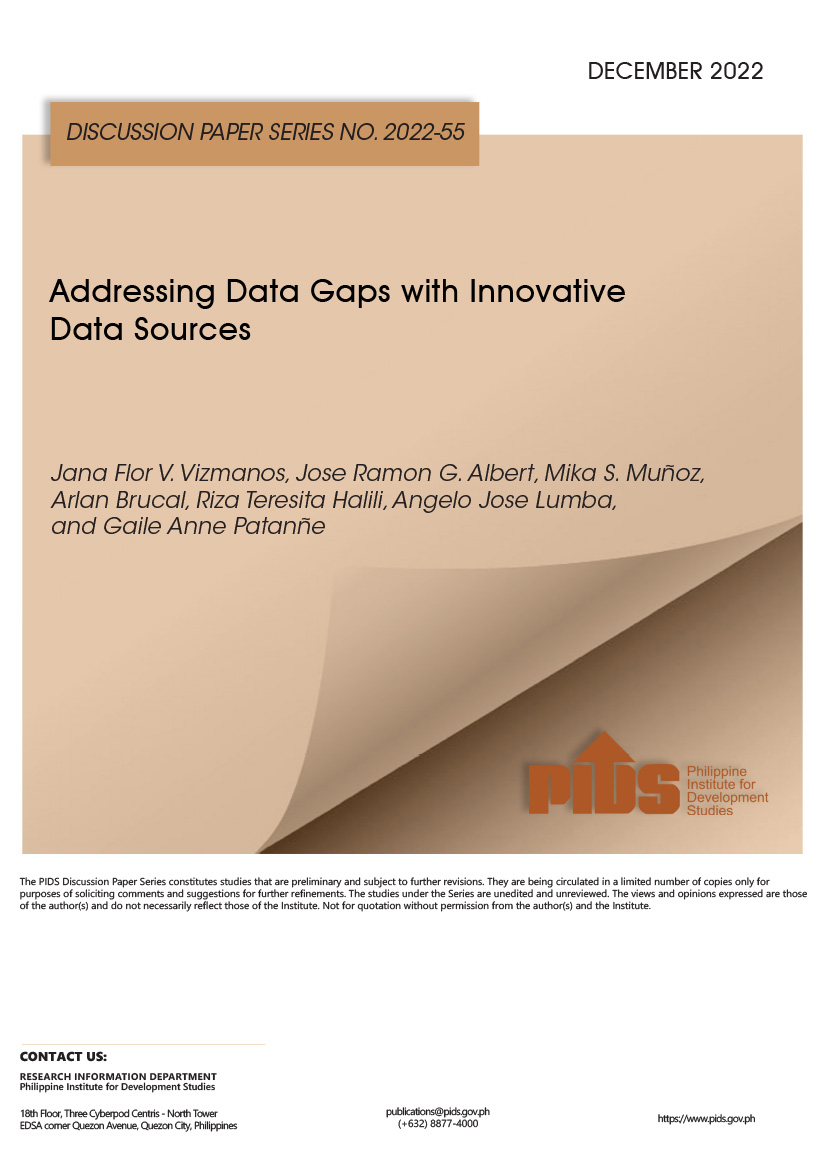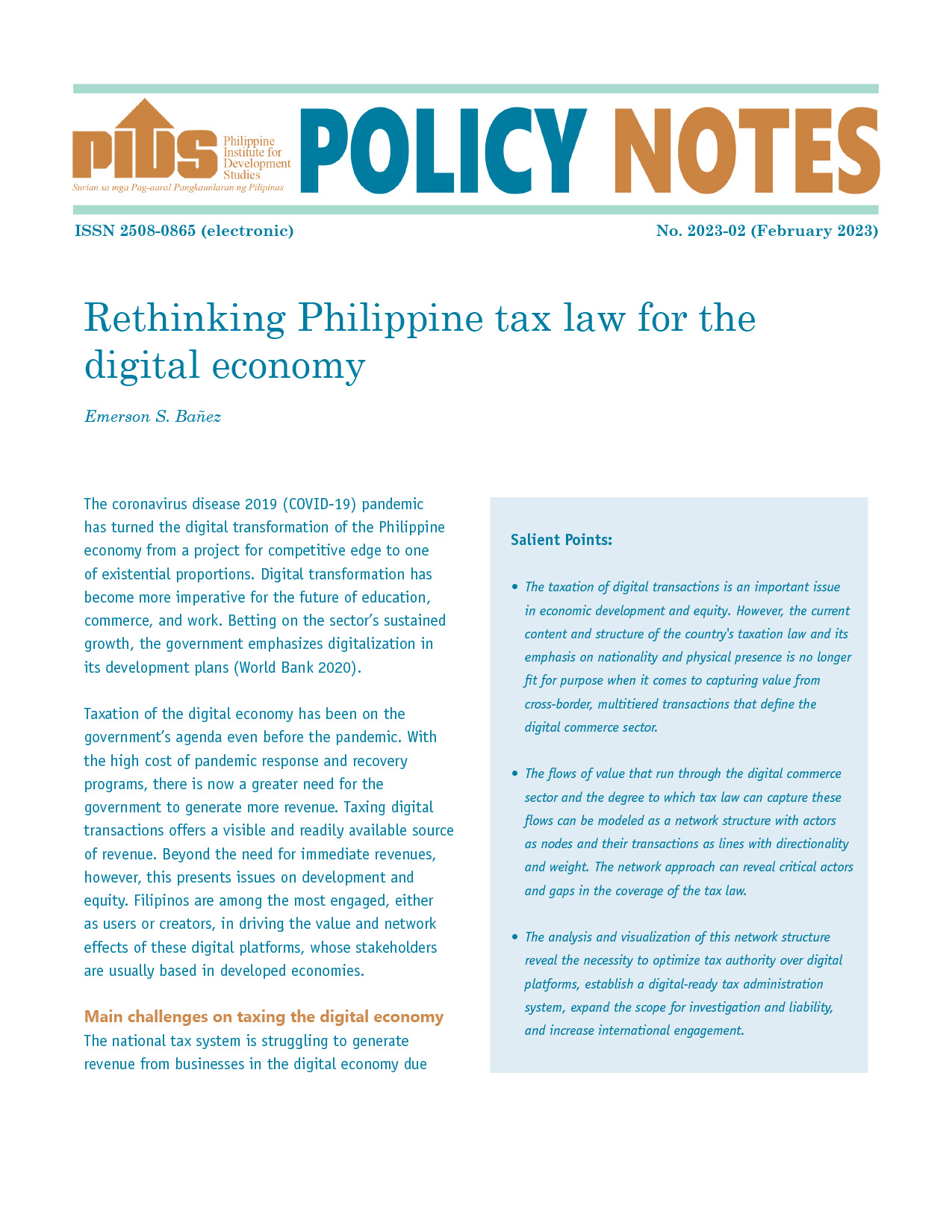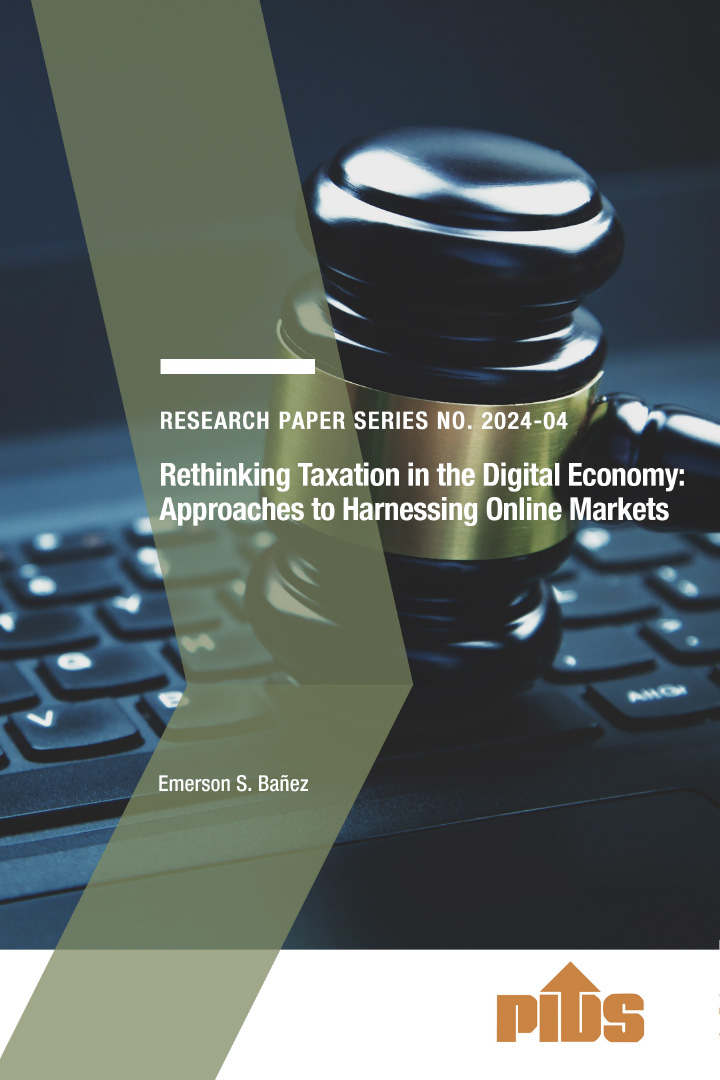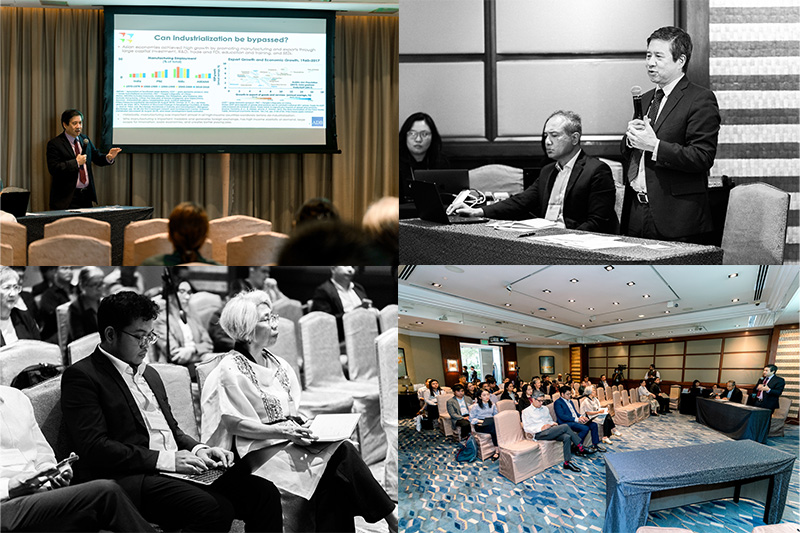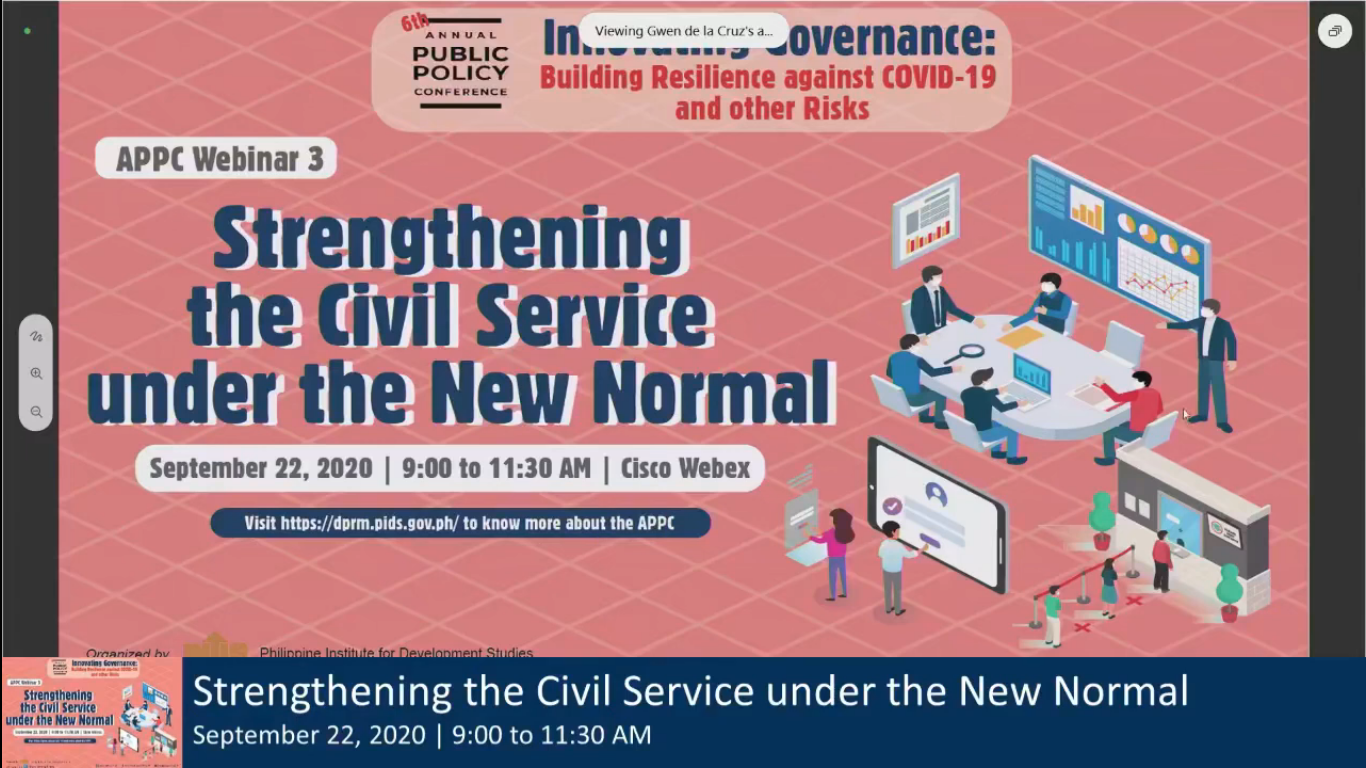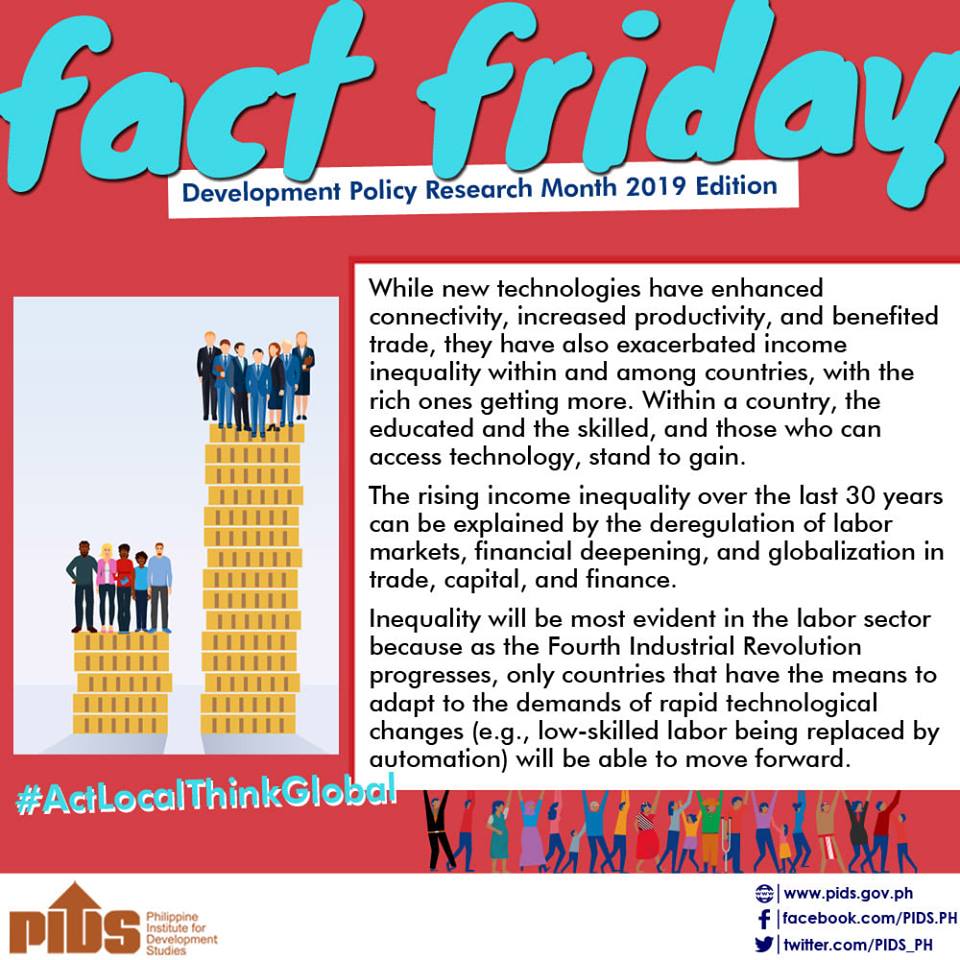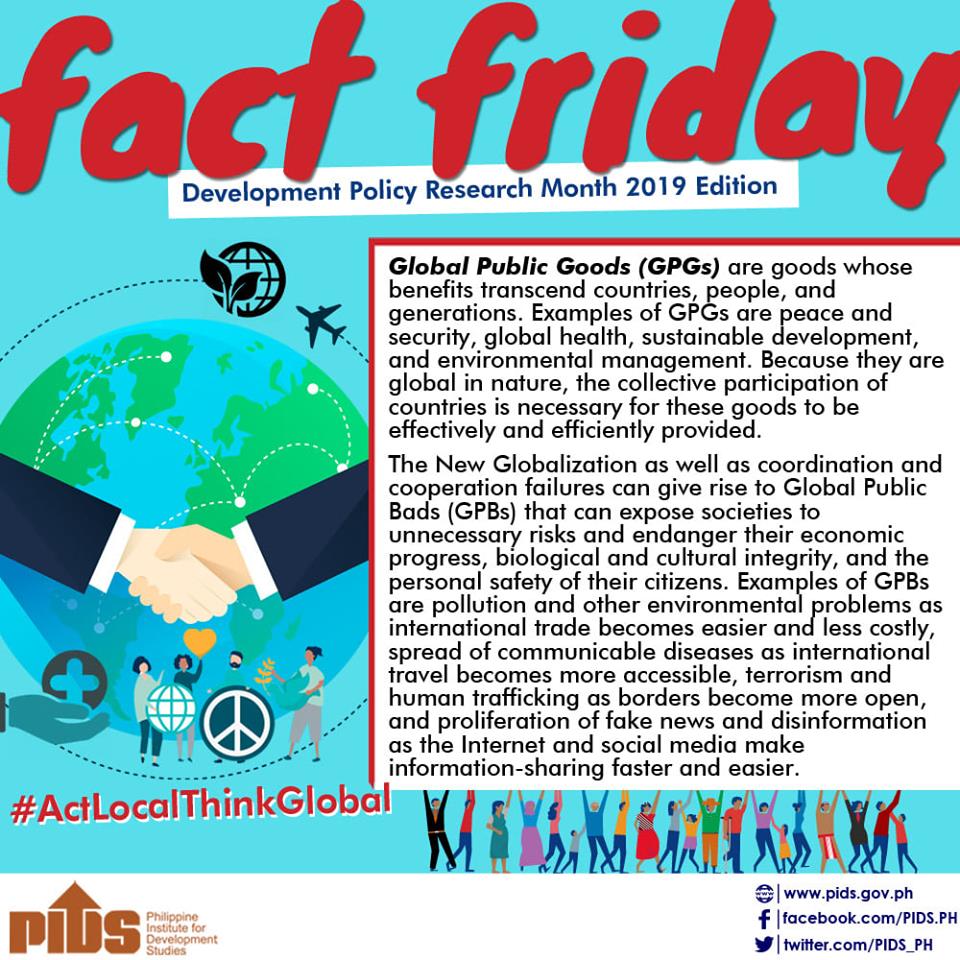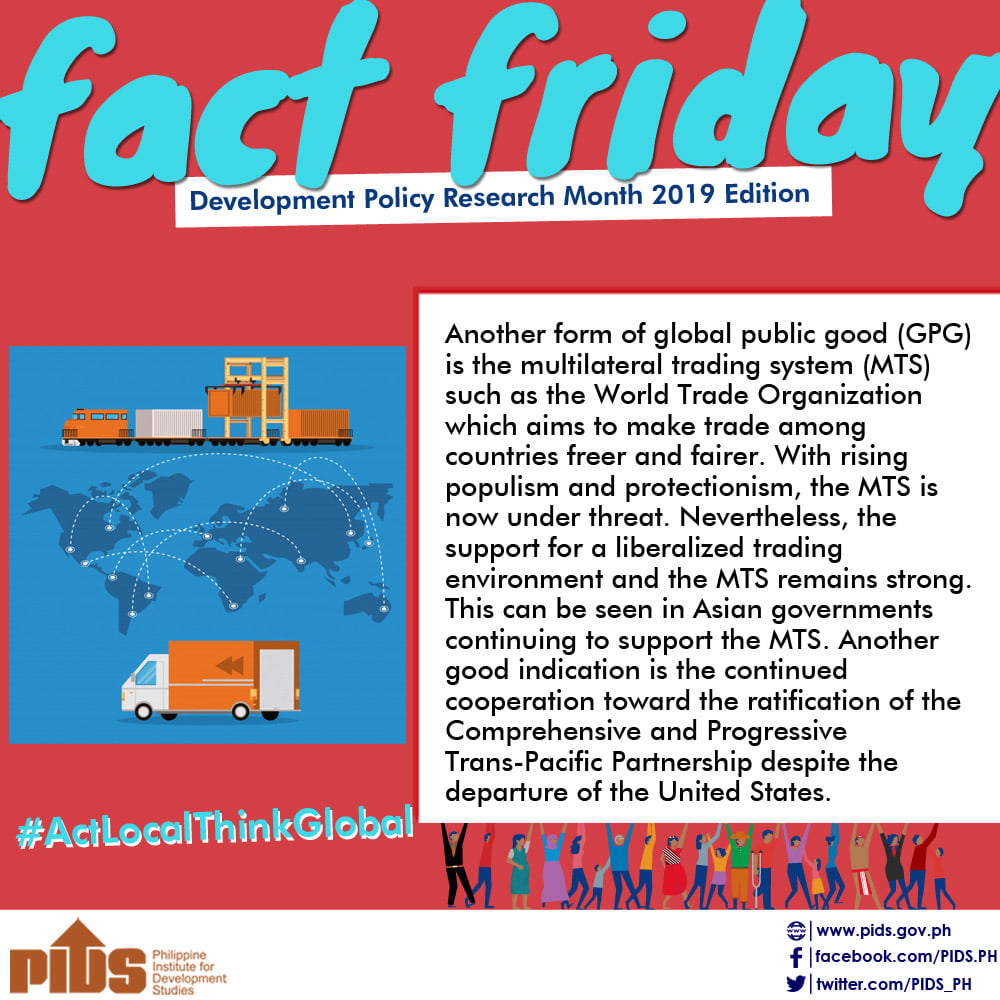In 2009-2010, one of then Senator Benigno S. C. Aquino III’s campaign promises was “no new taxes” -- a promise his administration kept only technically. And thankfully so, as “new taxes” were needed in 2010, and as I will discuss at the end of this column, will be needed in 2016-2017, as part of a comprehensive fiscal reform program for our country to scale up to our peers.
I said “technically” because of the sin tax increase/reform done in 2012 which was presented as a tweaking of an existing tax, and not a “new tax” despite its big impact on -- and for -- the taxpaying public. It was a long delayed adjustment to make up for decades of erosion in the real value of the tax, but at the same time there was an increase in the effective tax rates, as well reform in the structure by unifying rates and incorporating an annual 4% increase.
By packaging it as a health measure aimed especially at discouraging the young from smoking and earmarking the incremental revenues to fund universal access to health care, its prime movers -- the Department of Finance (DoF), Department of Budget and Management, Department of Health, supported by the World Bank, World Health Organization, the International Monetary Fund, and other development partners -- were able to form a broad coalition of public support for it. This included constituencies for better economic governance and for public health. The Action for Economic Reform was at the forefront of this mobilization. Business organizations like the Makati Business Club, and our Foundation for Economic Freedom (which has five former Finance Secretaries in its rolls) were proudly also part of it. On the public health side were Health Justice, New Vois Association Phils., Philippine Cancer Society, Philippine College of Physicians, etc.
With all of these advocates, and the leadership of the President, the Finance Secretary, the Senate President, the Speaker of the House and the Committee Chairs, it passed but only after exciting deliberations and drama.
It quickly yielded dividends, total alcohol and tobacco excise tax collections upped by 85% in 2013 and a further 14% in 2014. This increase contributed P101.4 billion or 1% of GDP in the first two years. The tax to GDP was only 12.1% at the time the Aquino administration took over in 2010; in 2014, it stood at 13.6%. (See charts)
The improvements in collection are explained not just by the higher effective tax rates, but by improvements in plugging tax evasion. At the time the law was being deliberated, likely increase in evasion and smuggling was the strongest argument of those opposing it.
The critical administrative reform here is the introduction of security stamp taxes, a feature that is required under the Tax Reform Law passed in 1997 during the Ramos administration, but which the tobacco lobby has been able to obstruct for 15 years of the succeeding administrations. That is, until Bureau of Internal Revenue Commissioner Kim J. Henares came along.
In a transparent competitive bidding in 2013, the BIR and its partner in this project, the APO printing office, selected a provider of a highly secure stamp tax system -- IRSIS, a consortium of Israeli and Philippine companies.
Two years later, 95% of cigarettes sold nationally bear security stamps. Enforcement is aided by an innovative monitoring project conceived by the Department of Finance, and sponsored by the World Bank. A couple of hundred part time data collectors with smart phones scour the country doing “whale sighting” everywhere cigarettes are sold. The whale is the icon chosen by the BIR for the stamps -- I thought most apt for the proverbial big fish BIR has been trying to snare since I was in the DoF in the 90s. (Ok, the whale is not a fish.)
The granular data collected for these whale sightings can be seen in the DoF Web site (dof.gov.ph) showing percent compliance by brand and by locality. Clearly, a powerful aid in monitoring tax compliance, instilling deterrence and for penal enforcement.
Commissioner Henares has announced security stamp taxes will forthwith be required also for alcohol products. A similar marking system is being contemplated for oil products by Bureau of Customs Commissioner Alberto D. Lina.
This tax policy and administrative reform program has been widely applauded. The Philippines’ credit rating was boosted by three notches, contributing to lower cost of borrowing of both government and the private sector, creating additional headroom for social and infrastructure spending.
Lower interest rates have also fueled private investments especially in housing, bringing direct benefits to our people. Health benefits were likewise palpable as smoking prevalence dropped from 29% in 2012 to 26% in 2014 in the general population, most strikingly among the young from 35% to 18%.
The sin tax reform program and its fruits have been impressive, but clearly not sufficient. Why?
1) Our infrastructure spending in the last 7 years has ranged from a low 1.4% of GDP to a high 2.1% according to the Philippine Institute for Development studies -- half of the 5% average in our neighbors. And we are paying the price for it -- in terms of gridlocks in roads, airports, seaports, lack of mass transport, no piped water outside Metro Manila, inadequate sewage systems, etc. The next administration will need to ramp up infrastructure spending to at least the same level of 5% of GDP -- preferably higher as one presidential candidate aims for.
2) Our latest tax to GDP (in 2014) at 13.%, is only 1.5 percentage points higher than at the start of this administration, below our peers. And far from the 15.3% record achieved in 1996 during the Ramos administration. Despite the heroic efforts of Commissioner Henares, there are limits in yield from tax administration reform, review of tax regulation and their reinterpretations. This has been the experience as well in other countries.
3) Additional spending commitment done by Congress for the next three years -- most notably increase in salaries, will add 0.5% of GDP every year for the next three years to the budget. The fiscal deficit though manageable at around 2%of GDP over the past five years, will be under pressure as a result of these advanced budget claims. Also from likely higher interest rates in both domestic and international markets. While our public debt to GDP of around 50% is comfortable, sharp increases in deficits will risk our newly minted investment grade rating.
4) The country has become tax uncompetitive. The corporate tax rate in the Philippines at 30% is much higher than countries in ASEAN which range from 17% for Singapore to 25% for Indonesia and Malaysia. Moreover, individual income taxes, especially on the low income levels have become inequitable as inflation pushed them up into brackets that were intended for the rich. Needed lowering in both corporate and personal income tax rates will require compensatory revenue measures elsewhere.
5) More fundamentally, our tax system needs drastic reform. Too complex, too many exemptions with debatable benefits, too narrow a base, too cumbersome and costly to comply with, and too prone to corruption despite well meaning efforts of its leadership.
A future column will float directions for a tax reform program, to include a variable tax on oil and other fuels, rationalization, perhaps a guillotine, on tax incentives and exemptions, including those in favor of senior citizens like me -- a perverse regressive subsidy paid for by the more numerous young poor. There are many other such exemptions and redundant incentives favoring groups and sectors that need to go.//
Romeo L. Bernardo was Finance Undersecretary during the Cory Aquino and Ramos administrations and board director of Institute for Development and Econometric Analysis Inc. (IDEA)
romeo.lopez.bernardo@gmail.com
I said “technically” because of the sin tax increase/reform done in 2012 which was presented as a tweaking of an existing tax, and not a “new tax” despite its big impact on -- and for -- the taxpaying public. It was a long delayed adjustment to make up for decades of erosion in the real value of the tax, but at the same time there was an increase in the effective tax rates, as well reform in the structure by unifying rates and incorporating an annual 4% increase.
By packaging it as a health measure aimed especially at discouraging the young from smoking and earmarking the incremental revenues to fund universal access to health care, its prime movers -- the Department of Finance (DoF), Department of Budget and Management, Department of Health, supported by the World Bank, World Health Organization, the International Monetary Fund, and other development partners -- were able to form a broad coalition of public support for it. This included constituencies for better economic governance and for public health. The Action for Economic Reform was at the forefront of this mobilization. Business organizations like the Makati Business Club, and our Foundation for Economic Freedom (which has five former Finance Secretaries in its rolls) were proudly also part of it. On the public health side were Health Justice, New Vois Association Phils., Philippine Cancer Society, Philippine College of Physicians, etc.
With all of these advocates, and the leadership of the President, the Finance Secretary, the Senate President, the Speaker of the House and the Committee Chairs, it passed but only after exciting deliberations and drama.
It quickly yielded dividends, total alcohol and tobacco excise tax collections upped by 85% in 2013 and a further 14% in 2014. This increase contributed P101.4 billion or 1% of GDP in the first two years. The tax to GDP was only 12.1% at the time the Aquino administration took over in 2010; in 2014, it stood at 13.6%. (See charts)
The improvements in collection are explained not just by the higher effective tax rates, but by improvements in plugging tax evasion. At the time the law was being deliberated, likely increase in evasion and smuggling was the strongest argument of those opposing it.
The critical administrative reform here is the introduction of security stamp taxes, a feature that is required under the Tax Reform Law passed in 1997 during the Ramos administration, but which the tobacco lobby has been able to obstruct for 15 years of the succeeding administrations. That is, until Bureau of Internal Revenue Commissioner Kim J. Henares came along.
In a transparent competitive bidding in 2013, the BIR and its partner in this project, the APO printing office, selected a provider of a highly secure stamp tax system -- IRSIS, a consortium of Israeli and Philippine companies.
Two years later, 95% of cigarettes sold nationally bear security stamps. Enforcement is aided by an innovative monitoring project conceived by the Department of Finance, and sponsored by the World Bank. A couple of hundred part time data collectors with smart phones scour the country doing “whale sighting” everywhere cigarettes are sold. The whale is the icon chosen by the BIR for the stamps -- I thought most apt for the proverbial big fish BIR has been trying to snare since I was in the DoF in the 90s. (Ok, the whale is not a fish.)
The granular data collected for these whale sightings can be seen in the DoF Web site (dof.gov.ph) showing percent compliance by brand and by locality. Clearly, a powerful aid in monitoring tax compliance, instilling deterrence and for penal enforcement.
Commissioner Henares has announced security stamp taxes will forthwith be required also for alcohol products. A similar marking system is being contemplated for oil products by Bureau of Customs Commissioner Alberto D. Lina.
This tax policy and administrative reform program has been widely applauded. The Philippines’ credit rating was boosted by three notches, contributing to lower cost of borrowing of both government and the private sector, creating additional headroom for social and infrastructure spending.
Lower interest rates have also fueled private investments especially in housing, bringing direct benefits to our people. Health benefits were likewise palpable as smoking prevalence dropped from 29% in 2012 to 26% in 2014 in the general population, most strikingly among the young from 35% to 18%.
The sin tax reform program and its fruits have been impressive, but clearly not sufficient. Why?
1) Our infrastructure spending in the last 7 years has ranged from a low 1.4% of GDP to a high 2.1% according to the Philippine Institute for Development studies -- half of the 5% average in our neighbors. And we are paying the price for it -- in terms of gridlocks in roads, airports, seaports, lack of mass transport, no piped water outside Metro Manila, inadequate sewage systems, etc. The next administration will need to ramp up infrastructure spending to at least the same level of 5% of GDP -- preferably higher as one presidential candidate aims for.
2) Our latest tax to GDP (in 2014) at 13.%, is only 1.5 percentage points higher than at the start of this administration, below our peers. And far from the 15.3% record achieved in 1996 during the Ramos administration. Despite the heroic efforts of Commissioner Henares, there are limits in yield from tax administration reform, review of tax regulation and their reinterpretations. This has been the experience as well in other countries.
3) Additional spending commitment done by Congress for the next three years -- most notably increase in salaries, will add 0.5% of GDP every year for the next three years to the budget. The fiscal deficit though manageable at around 2%of GDP over the past five years, will be under pressure as a result of these advanced budget claims. Also from likely higher interest rates in both domestic and international markets. While our public debt to GDP of around 50% is comfortable, sharp increases in deficits will risk our newly minted investment grade rating.
4) The country has become tax uncompetitive. The corporate tax rate in the Philippines at 30% is much higher than countries in ASEAN which range from 17% for Singapore to 25% for Indonesia and Malaysia. Moreover, individual income taxes, especially on the low income levels have become inequitable as inflation pushed them up into brackets that were intended for the rich. Needed lowering in both corporate and personal income tax rates will require compensatory revenue measures elsewhere.
5) More fundamentally, our tax system needs drastic reform. Too complex, too many exemptions with debatable benefits, too narrow a base, too cumbersome and costly to comply with, and too prone to corruption despite well meaning efforts of its leadership.
A future column will float directions for a tax reform program, to include a variable tax on oil and other fuels, rationalization, perhaps a guillotine, on tax incentives and exemptions, including those in favor of senior citizens like me -- a perverse regressive subsidy paid for by the more numerous young poor. There are many other such exemptions and redundant incentives favoring groups and sectors that need to go.//
Romeo L. Bernardo was Finance Undersecretary during the Cory Aquino and Ramos administrations and board director of Institute for Development and Econometric Analysis Inc. (IDEA)
romeo.lopez.bernardo@gmail.com

